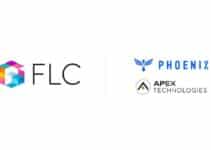Is your organization taking full advantage of technology? Given research shows only 4% of organizations are digitally optimized, likely not. As a leader, it’s vital to look for ways for your employees to do better work, and optimizing your organization is a great place to start.
Optimized organizations use technology to automate workflows, improve processes, and prevent information silos, which upgrades the overall employee experience and leads to happier, more productive teams. These tech-savvy teams communicate across departments, foster a culture of collaboration, and have time to work on high-value projects instead of toiling over repetitive, time-consuming tasks.
Leverage technology’s flexibility and model the same
Seek technology, particularly no-code tools, that empowers your employees and improves the employee experience. Here’s how the most forward-thinking organizations will maximize the benefits of technology:
No code needed
Bring no-code tech into your IT stack to enable everyone—even tech novices—to customize their own digital solutions without writing code. This accessible technology alleviates the pressure on stretched-thin IT teams that can create bottlenecks and delay projects.
Try before you buy
Allow employees to proactively try new digital solutions. Just as you encourage transformational thinking and experimentation, you should applaud employees for trying technology that solves pertinent business problems. Even further, have them join the decision-making process when implementing new tech. They are the ones who will be using it, after all.
Make it an easy yes
Enable easy tool adoption by granting ready approvals for tech purchases and ensure that employees know the process, how it works, and when to take advantage of it.
Is it worth it
Do frequent technology audits that determine the value of your tools. Divest in legacy technology that is no longer valuable—chances are this antiquated technology will become even less valuable over time and won’t integrate with newer tools. All employees should be involved in this process to ensure management understands how and when the tools are used.
Grow and shrink
Embrace your tech stack’s expansion and contraction, as it means your technology is evolving to adapt to changing business needs and new workplace challenges. Through frequent and transparent communication, the deployment team will be eager to continue building a well-rounded tech stack.
Create team alignment
Push workplace collaboration that sidesteps the dangers of siloed departments and orphaned knowledge.
Establish protocols
Investigate how you share ideas and learnings and consider developing formal protocols for seamless interdepartmental communication. For example, monthly peer groups or cross-departmental social events are great avenues to encourage collaborative conversation.
Offer options
Encourage peers and employees to communicate across departments using a variety of channels like meetings, emails, and collaboration solutions like Slack. In addition, consider implementing a survey tool like Polly to gather insights or engagement tools such as Donut to promote discussion amongst departments.
Track it all
Establish an organization-wide reporting structure for data tracking so everyone is speaking the same language. By doing so, organizations create a seamless system that allows employees to understand better how, where, and why data is being used.
Make better decisions
Enable data-backed decision-making for all employees across departments and teams by creating a consistent framework for tracking information like required workflow updates, tech maintenance, and system costs. Consider all components that are consistently tracked, gather an employee cohort, and analyze the best practices for tracking data that works across all departments.
In today’s ever-changing digital world, organizations that do not embrace the merits of technology will be left behind. Technology’s inherent flexibility enables teams to engage in meaningful work and encourages interdepartmental collaboration, leading to a more connected, efficient workplace with empowered employees. Ultimately, leveraging technology elevates a team’s performance and drives success for the entire organization.
Chris Byers is CEO of Formstack, a secure workplace productivity platform, where he has helped scale the company to more than 25,000 customers and more than 300 employees worldwide. Before joining Formstack, Byers led investor relations and financing for a regional healthcare firm, where he raised more than $100 M annually to fund operations, construction, and the purchase of medical equipment. Byers is currently involved in several nonprofit organizations focused on poverty relief, environmental restoration, education, and race and gender equality.


